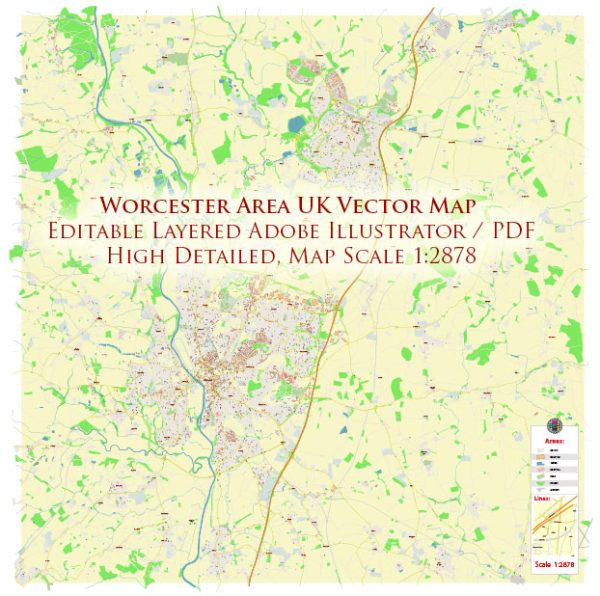The city of Worcester, located in the West Midlands region of England, has a rich history of urban development that spans many centuries. Here is a brief overview:
- Roman Period (1st century AD): Worcester, known as ‘Vertis’ during Roman times, was an important Roman settlement. The Romans established a fortress and a civilian settlement, contributing to the early urbanization of the area.
- Medieval Period (11th – 15th centuries): Worcester became a significant medieval town, with the construction of Worcester Cathedral starting in the late 11th century. The town grew around the cathedral and the River Severn, becoming a center for trade and commerce. The medieval street plan still influences the layout of the city center today.
- Tudor and Stuart Periods (16th – 17th centuries): During the Tudor and Stuart periods, Worcester continued to thrive as a market town. The timber-framed buildings from this era can still be seen in some parts of the city. The English Civil War had a significant impact on Worcester, particularly during the Battle of Worcester in 1651, which was the final battle of the war. After the war, the city experienced a period of decline.
- Georgian and Victorian Periods (18th – 19th centuries): The 18th and 19th centuries brought about a revival in Worcester’s fortunes. The Industrial Revolution led to increased economic activity, and the city expanded with the development of industries such as glove-making, porcelain manufacturing (Worcester porcelain), and the production of textiles. This period saw the construction of new streets and buildings, many of which still stand today.
- 20th Century: Worcester continued to grow in the 20th century, with urban development spreading into surrounding areas. The city faced challenges during World War II, and post-war reconstruction efforts led to changes in the urban landscape. Modern architecture began to blend with historic structures.
- Contemporary Period: In recent decades, Worcester has undergone further urban development. The city has seen a mix of new construction, urban renewal projects, and efforts to preserve its historical character. The economy has diversified, with a focus on education, healthcare, and technology.
- Infrastructure and Transportation: The city’s infrastructure has evolved over time. The construction of bridges over the River Severn and the development of road and rail networks have played crucial roles in connecting Worcester to the broader region.
Today, Worcester is a vibrant city that balances its historical charm with modern amenities and infrastructure, making it a notable center in the West Midlands.


 Author: Kirill Shrayber, Ph.D.
Author: Kirill Shrayber, Ph.D.